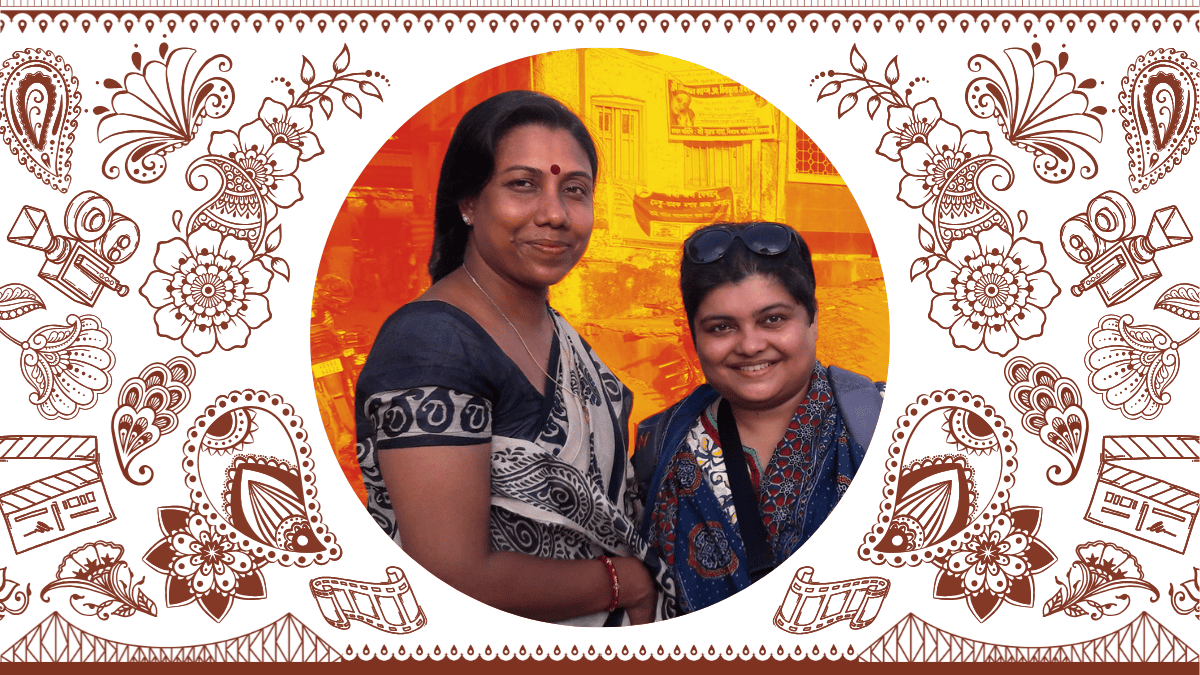
1. How would you describe your work in 3 adjectives?
Feministic, gruelling, and rewarding.
2. What would people be surprised to know about you?
It depends on the “people” you are referring to. But then…why ruin the surprise?
3. How does your home, Kolkata, influence your work?
A lot. My first entry to world cinemas happened here at the Kolkata Film Festival. My feminist gaze and my ability to analyse a film, a piece of literature or any text was built gradually in the classrooms of the departments of Comparative Literature and Film Studies and in the school of Women’s Studies during my days in Jadavpur University.
Kolkata used to be a cultural hub in India and there are several different Kolkatas hidden inside it that have influenced my upbringing immensely: Bengali literature, socio-cultural festivals, gossip culture, the laid-back pace, the crowd, the coziness, the triviality, the political influences and its changes in due course, and of course the Tagore song Rabindrasangeet have shaped my thought process. That has an important role in my writings, in my films or in any creative work that I do.

4. What are the things that bring you the most joy?
Apart from writing, filming and facilitating workshops on gender, menstruation, taboos and other adolescent issues, the things that bring me the most joy are a room of my own with some me time, reading stories to my daughter at bed time, exploring places and people, being close to nature, soaking in sun and in rain, hiking in hills, dancing with waves, singing aloud, watching/reading/telling stories of unheard voices, cooking and eating, wordplay with people with proper sense of humour and wit, and heartfelt appreciation and acknowledgement of my hard work and honest effort.
5. How do you get into the “zone” of your creative process?
I need to relate to my creative work personally. I work in my mind first. That process continues simultaneously when I cook or when I do my daily chores or when I travel. The process continues. Once I feel it is done or I feel the urge to express it passionately, I am ready to go.
6. What advice would you give to your younger self?
Start filming early — know your call and start exploring early. Have control over your emotions and do not invest emotionally in anyone other than your own self and move on. And yes, money matters indeed, sistah! Cheers!

7. What are your favourite things you’ve watched, read and listened to lately?
- Watched: “All We Imagine as Light” by Payal Kapadia
- Read: A collection of Bengali fairytales written from feminist gaze with girls as the “sheros”
- Listened: The beautiful rendition of a Tagore song by my Guru, eminent singer and Tagore exponent Smt. Pramita Mallick. The lyrics say, “I have failed to sing that song yet that I was meant to sing here in this world.” It echoes in my heart too.
8. How has the Sriyanka Ray Grant impacted your current project?
I was on the edge of a deep, dark gorge financially and mentally when I received the Sriyanka Ray Grant. I cried when I heard the news — the cry of survival. I cried because I remembered my one and only meeting with Sriyanka in our Bitchitra Collective meet-up here in Kolkata, where she appreciated my project and expressed her solidarity to support it. Then I received all the love, attention, and support from Bitchitras and from BGDM that helped my almost vanished confidence back on track.
I could start post-production properly with the money and though I have still been struggling to get more funding and collaboration with co-producers on different levels to finish post production followed by impact, publicity, festivals and so on. I would not have dared to dream further without this grant. Murshida even got pre-selected for the IDFA Bertha Classic Fund this year. It could not get through the final round but the hope and confidence pushed me forward. I have never felt alone since then. I know a community is there to hold my back and this is huge.
9. What has been the most challenging part of filming Murshida? What has been the most rewarding?
The most challenging part of filming Murshida was lack of funds and access to the orthodox homes of some protagonists — but with the help of Murshida, we could overcome many challenges. Being too close to Murshida was another challenge. She had full faith and trust in me, but at some points, I was confused whether to shoot her vulnerable moments or not, even if she had no issues.
The most rewarding part of filming Murshida is Murshida’s friendship and having a second home at her place. Those innocent eyes and pure smile of her students made us forget all our challenges. I feel blessed to have full support, full access, and a shower of love from every student and colleague of Murshida at her Madrasah. Her family has also become our family friends. Besides, my daughter’s experience of realizing how privileged she has been during the shoot and after, is a great reward to me too.








